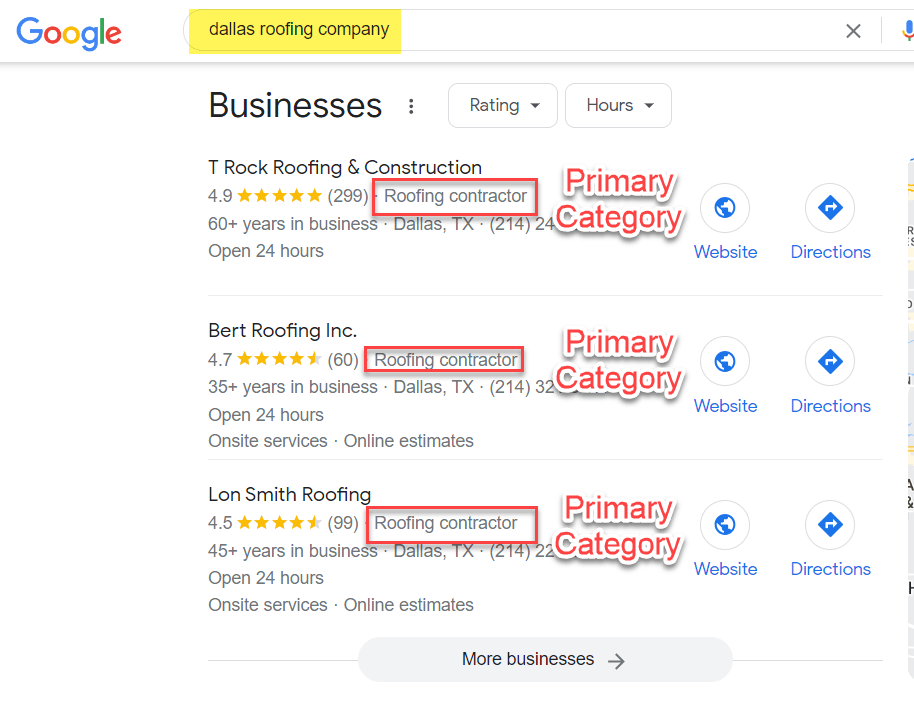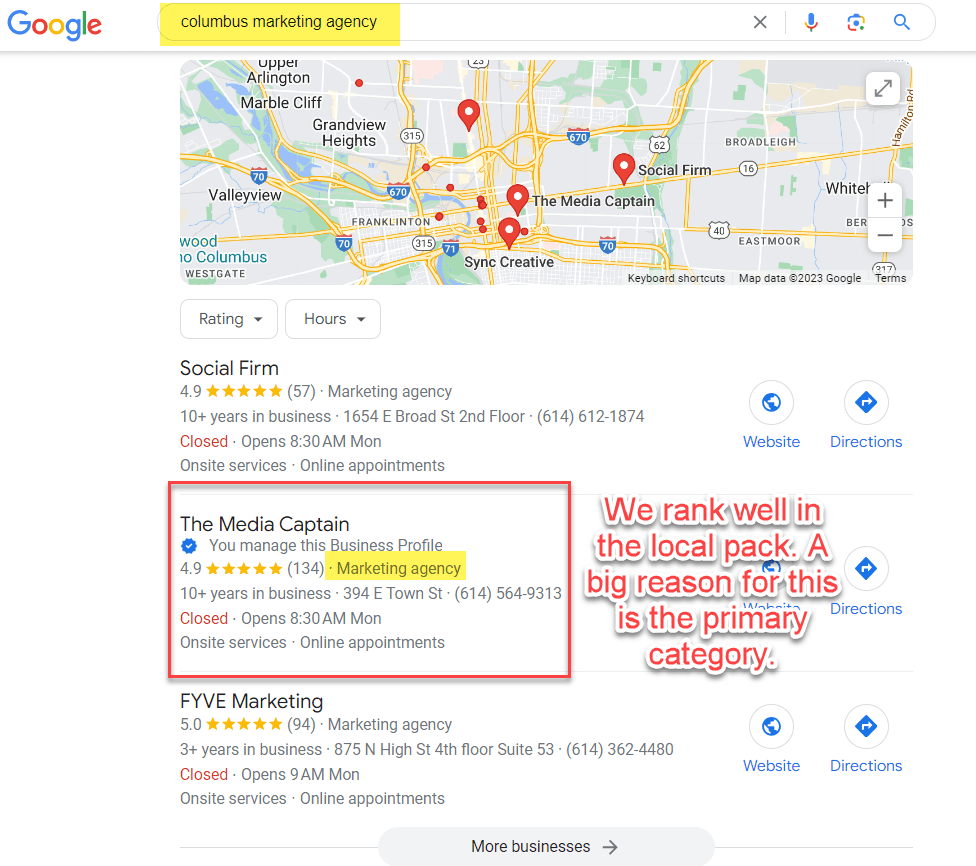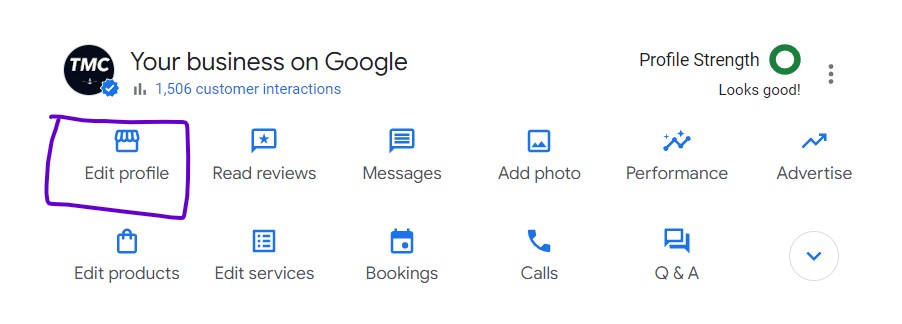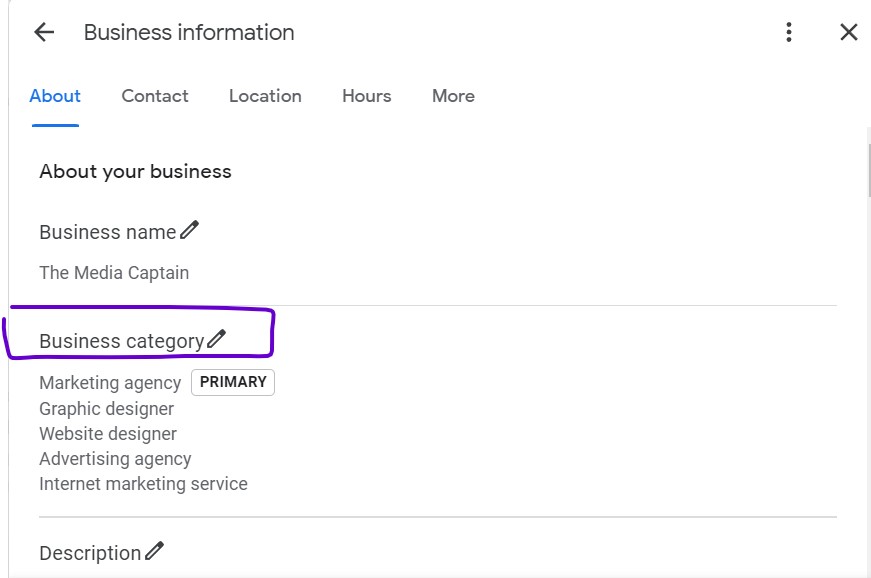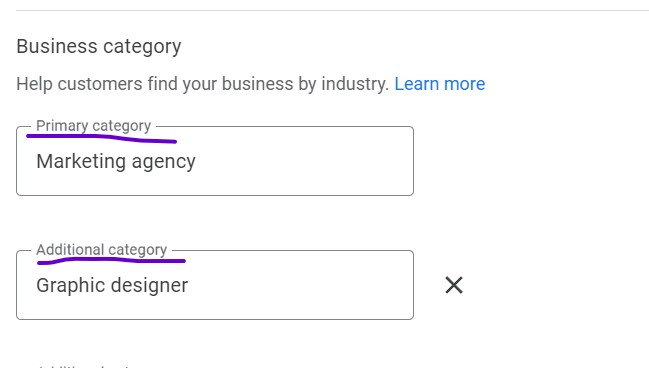Importance Of Primary Category
According to Whitespark’s 2023 local search ranking factors, the primary category is the most critical Google Business Profile ranking factor, ahead of keywords in the business name and proximity.
You must pick the best primary category for your business to reap the local SEO benefits. With over 4,000 categories to choose from, it can feel daunting to select the right one.
The best primary category can be selected by considering specific business initiatives, such as profitability, growth opportunities, and competitive research.
I will share examples throughout the article to help you better understand different businesses’ decisions in choosing their primary category. I will also show you how easy it is to edit and add primary and secondary categories.
By the end of this article, you should have more confidence in selecting the best primary category for your business!
Primary vs. Secondary Category
Google Business Profile categories describe your business. They connect you to customers who search for your products or services [source: Google]. There is a primary and secondary category. You can only select one primary category, but you can choose multiple secondary categories. Google puts more weight and emphasis on the primary category, so picking the right one is important.
Note: If you have multiple Google Business Profile locations, the primary category must stay consistent across each location.
Related Article: Google Business Profile Optimization Checklist
EXAMPLES: CHOOSING PRIMARY VS. SECONDARY CATEGORIES
Example 1: Marketing Agency (Primary Category Selected For Profitability)
Our agency, The Media Captain, offers web design and marketing services. I faced a tough decision on what to choose for the primary category.
The marketing side of our business generates 70% of revenue, while web design generates approximately 30%. Marketing is more profitable since our clients are on an ongoing retainer versus one-time projects for web design. Web design is a fast-growing part of our business, which I want to continue growing.
Ultimately, I decided on marketing agency as the best primary category while selecting web design as one of the secondary categories due to profitability.
Primary Category: Marketing Agency
Secondary Categories: Website Designer, Graphic Designer, Advertising Agency, Internet Marketing Service.
Related Article: 30 Google My Business Stats that Prove the Power of Local SEO
Example 2: Attorney (Primary Category Based On Competition)
A law firm client had two divisions of their law firm, specializing in personal injury and real estate law.
When onboarding their account, we realized their primary category was Lawyer, which was too broad.
Since personal injury is so competitive and this was a relatively new law firm, we decided to make the primary category Real Estate Attorney, as revenue was almost even between personal injury and real estate.
This change in the primary category resulted in this client ranking in the local pack for real estate queries within their market.
Primary Category: Real Estate Attorney
Secondary Categories: Personal Injury Attorney, Lawyer
Helpful Advice: Since it was important for this attorney to also rank for real estate and personal injury, we encouraged their lawyers to create a practitioner listing, which allows a public-facing professional to have a separate presence from the business. If eligible, don’t forget to sign up for practitioner listings.
Example 3: HVAC Company (Primary Category Based on Competitive Research)
It’s essential to also do competitive research before selecting the best Google Business Profile primary category. I recommend conducting a Google search in your and other markets to see what other businesses ranking in the local pack have as their primary category.
In the example below, when searching for “Columbus Heating Company,” you will find two businesses using HVAC Contractor as the primary category while the other uses Heating Contractor.
For Cardinal Heating & Cooling, since they offer heating and cooling services, I would change the primary category to “HVAC Contractor” to improve their chances of ranking for heating in the winter and air conditioning in the warmer months.
I made this decision more confidently since other businesses rank in the local pack with HVAC Contractor as the primary category.
How to Edit or Change Your Google Business Primary and Add Secondary Category
Let’s dive into how to edit your business profile category to differentiate primary versus secondary categories.
- Go to your business profile and click “edit profile.”
- Google changed the interface in 2022 on how to access your Google Business Profile. If you do a Google Search for your business and you’re logged into the Gmail account synced to your GBP, you can access this information within the branded search results.
- Click on the pencil icon next to the business category.
- You will notice there is a primary, and the others are secondary.
- Select one primary and multiple secondary categories that align with your business.
- HERE is a list of the 4,000+ categories to choose from
- Changing the primary and secondary categories on your Google Business Profile is very simple.
- You are not stuck with the primary category you select. This can later be changed.
My Opinion on GBP’s Primary Category
I wish Google did a better job distributing the weight evenly amongst the primary and secondary categories. There is so much emphasis on the primary category that it is hard to rank for any secondary categories. For example, our agency has very little visibility in the local pack for web design since this is a secondary category.
In Closing
- A ton of emphasis is put on the primary category as it’s the most critical ranking factor for the local pack.
- Deciding between profitability, growth opportunity, and competitiveness will help you make a more sound decision on your GBP primary category.
- It’s quick and easy to change your primary and secondary categories.
If you need more help determining the best Google Business Profile primary category for your business, contact The Media Captain!



